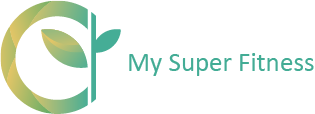Advertisement
This ad is displayed using third party content and we do not control its accessibility features.

Former Senior Beauty & Lifestyle Editor
Former Senior Beauty & Lifestyle Editor
Jamie Schneider is the former Senior Beauty Editor at mindbodygreen. She has a B.A. in Organizational Studies and English from the University of Michigan, and her work has appeared in Coveteur, The Chill Times, and Wyld Skincare.

Image by PeopleImages / iStock
September 15, 2024
We carefully vet all products and services featured on mindbodygreen using our
Our selections are never influenced by the commissions earned from our links.
We know, we know—if there was a list of the worst skin care habits, popping pimples would likely earn the No. 1 spot. And yet, even the most careful beauty buffs among us sometimes fall victim to finicky fingers.
Like doomscrolling through social media or impulsively texting your ex: It will be different this time, you tell yourself before poking and prodding at your skin (and, womp womp, it never is).
After the initial high of instant gratification starts to ebb, all you’re left with is one angry, inflamed, throbbing bump.
OK, don’t panic (or punish yourself; it happens!). While popping pimples is a major no if you can help it, derms do have ways to salvage the situation and speed up healing:
1.
Step away from the mirror
First step? Walk away. “Put the [magnifying] mirror away and stay out of the bathroom; it is not your friend,” says board-certified dermatologist Ava Shamban, M.D., founder of SKINFIVE. The best way to squash any more temptations for self-surgery (and risk even more damage) is to physically remove yourself from the situation—the bathroom is a triggering space for many pimple pickers, especially at night when you have more time to wind down.
If you’re having trouble holding back, you can always toss on a pimple patch to physically cover up the spot. Not only do these keep you from picking at the zit, but some options also come infused with soothing ingredients that can expedite healing, like aloe vera or hyaluronic acid.
2.
A cool compress is your friend
Oftentimes, when you pick at zits, they start to bleed. “The forced trauma of pushing the contents to the surface often brings up blood with the pustule contents through the pore,” says Shamban. If this happens, she recommends immediately washing your hands, grabbing a cool compress, and gently applying pressure until the bleeding stops.
Once the bleeding ebbs, it’s time to tame the swelling. And what’s the best way to soothe a puffy bump after an injury? You guessed it—ice. “A cold compress or ice pack (not ice directly to the skin) can be helpful,” Shamban notes. You can wrap an ice cube in a tissue to buffer the frigid temperature, or even lightly press a chilled ice roller onto the mound; just remember to use gentle pressure, always.
3.
Keep inflammation & infection at bay
Other than using ice to bring down the swelling, some topicals can help the inflammation and redness ease—like chamomile, which has been used for centuries for treating wounds and skin irritations1 in traditional medicine, thanks to its anti-inflammatory properties2 to help soothe angry, inflamed skin.
And remember: You’re now dealing with an open wound, so it’s important to keep it clean and away from bacteria. Shamban touts tea tree oil (diluted, of course) as an effective remedy: In addition to its antifungal, antiviral, and antibacterial properties, researchers have also seen an increase in white blood cell activity associated with tea tree oil use, which is integral when it comes to the acne-healing process3.
In some cases, a derm might recommend a dab of antibiotic ointment to speed up healing (so if your popped pimple is super painful or isn’t getting better, we always recommend visiting your doctor).
However, you might not want to pile on any heavy-duty antibacterials, like hydrogen peroxide. “Yes, it can and does kill harmful bacteria, but it can irritate, burn, or otherwise exacerbate the open wound and also slow the healing process and formation of the scab,” says Shamban. Stick to gentle methods while the skin is healing—and on that note, you don’t want to exfoliate the area until the skin is completely healed.
The takeaway
Of course, the best plan of action is to refrain from popping pimples in the first place—picking at your skin can only prolong the damage and make it harder to heal. But, sigh, we know that the self-surgery does happen from time to time; in those moments, consider this guide your saving grace.

-v1646695196476.jpg?1148x800)